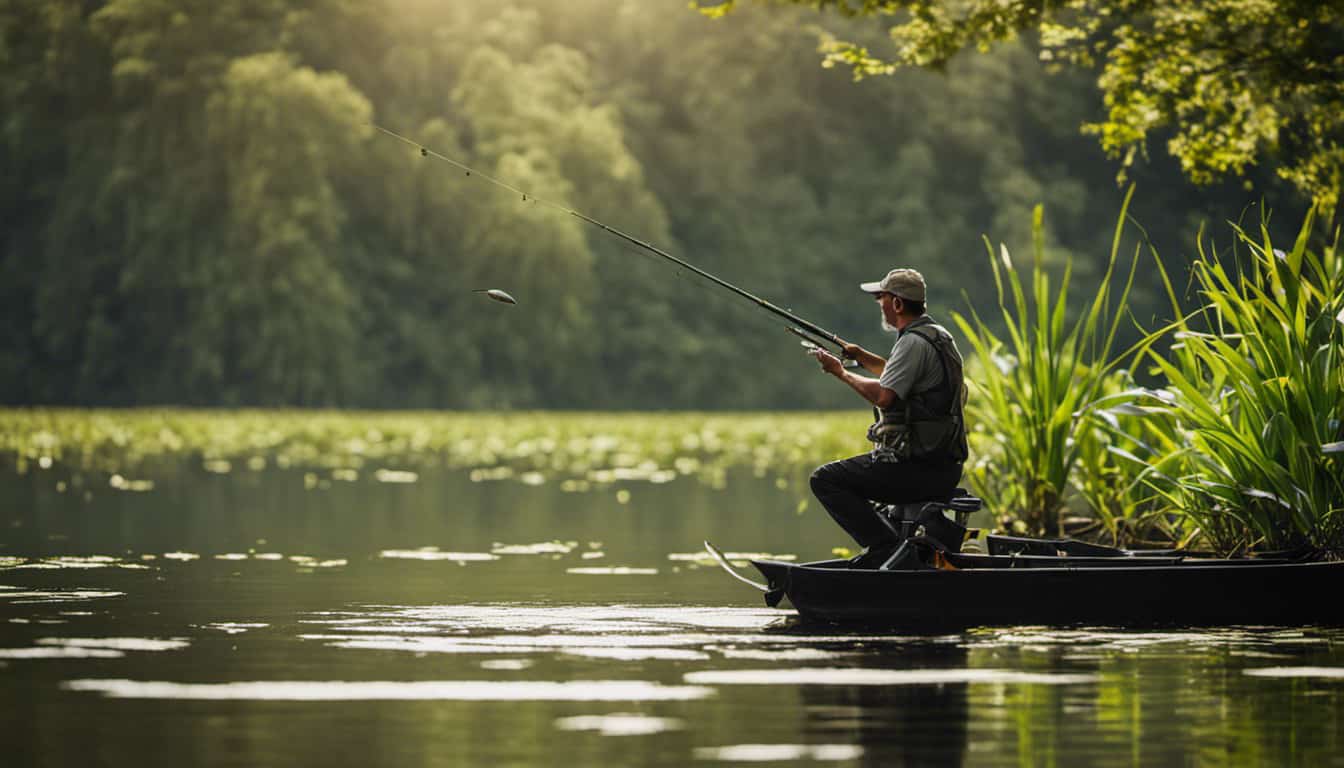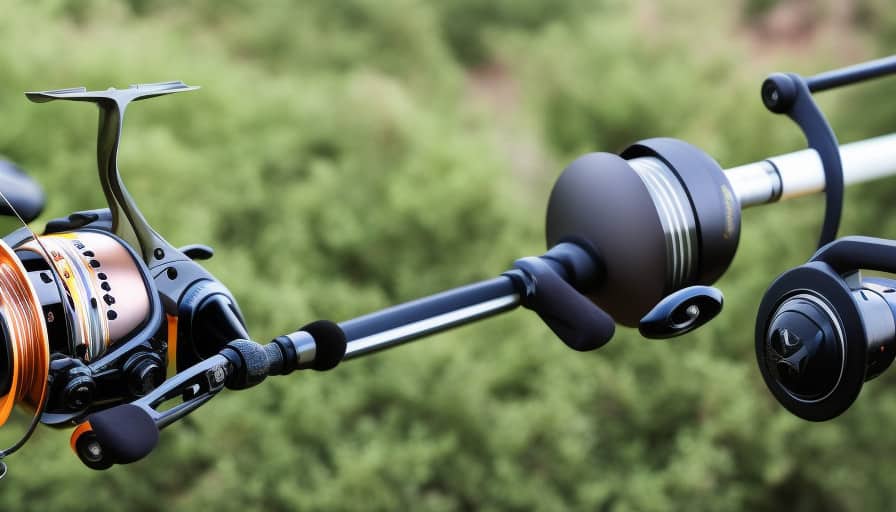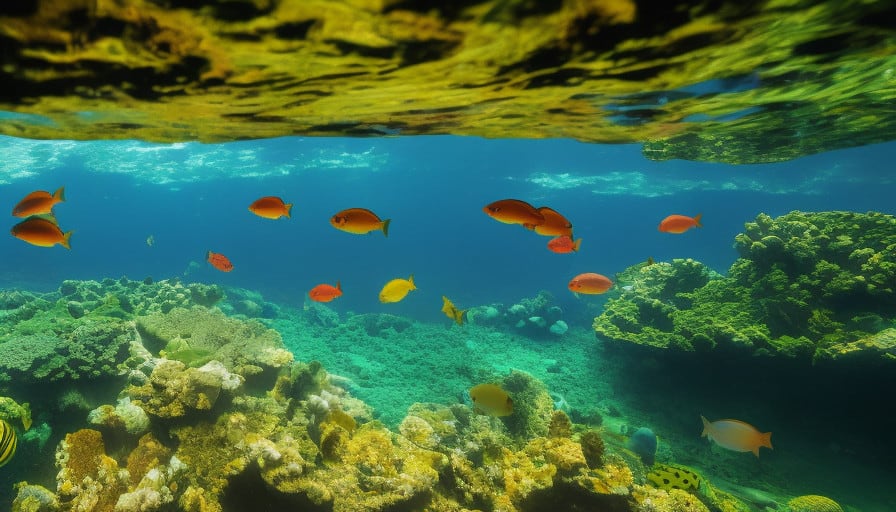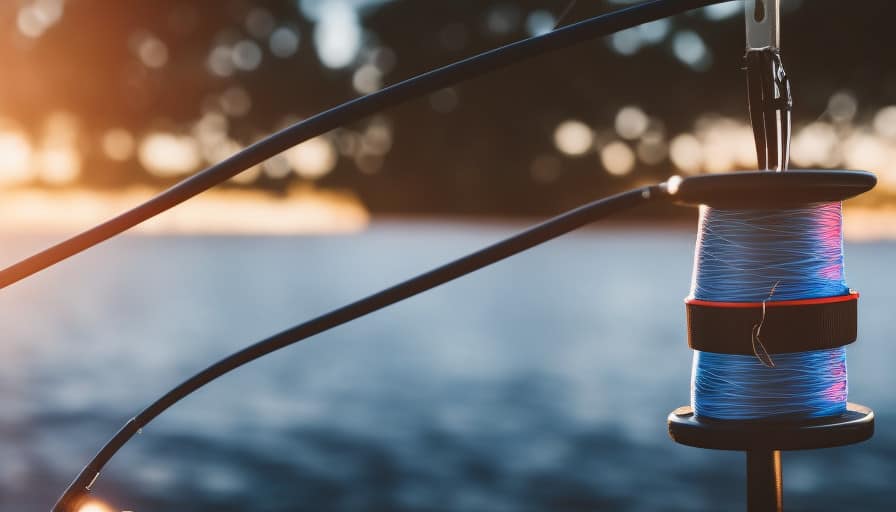Snakehead fish (Channa spp.) has become a subject of interest among anglers due to its aggressive behavior and challenging nature. This article aims to provide a comprehensive guide on the methods and techniques employed in catching snakehead fish.
By discussing the identification of snakehead habitats, essential fishing gear, bait and lure selection, as well as casting and retrieving techniques, this article caters to the audience’s desire for mastery in the pursuit of this formidable fish species.
Furthermore, tips for safely landing and handling snakehead fish will be provided to ensure ethical fishing practices.
Locating Snakehead Habitats
The identification of suitable habitats for snakehead fish is essential for effectively capturing them. Understanding snakehead fish behavior and knowing the best time to fish for snakehead can greatly increase one’s chances of success.
Snakehead fish are primarily freshwater species that inhabit warm, slow-moving bodies of water such as lakes, ponds, and rivers. They are known to prefer areas with thick vegetation, submerged logs, and overhanging trees, as these provide cover and ambush opportunities for hunting prey. Snakehead fish are also known to frequent areas with low oxygen levels, such as stagnant pools and backwaters.
To locate snakehead habitats, it is important to consider their behavior and preferences. Snakehead fish are most active during dawn and dusk, making these the best times to fish for them. During these periods, snakehead fish are more likely to venture out of their hiding spots to feed. Additionally, they are known to prefer areas with shallow water near the shorelines, especially during the spawning season.
Identifying these key features can help anglers pinpoint potential snakehead habitats and increase their chances of success. However, it is important to note that snakehead fish are highly adaptable and can thrive in a variety of environments, so it is crucial to conduct thorough research and observe local conditions to accurately identify suitable snakehead habitats.
Essential Snakehead Fishing Gear
One important aspect when targeting snakehead is to have the appropriate gear. Snakehead fishing requires specialized equipment to maximize success and ensure the safety of the angler and the fish. Here are three essential gear items for snakehead fishing:
-
Rods and Reels: Choose a medium to heavy-duty rod and reel combo with a strong backbone to handle the aggressive strikes and powerful fights of snakehead. A baitcasting reel with a high gear ratio is recommended for better control and quick retrieval.
-
Lines and Leaders: Use braided lines with a high pound-test strength to withstand the sharp teeth and powerful runs of snakehead. A fluorocarbon or wire leader is necessary to prevent line breakage from the fish’s strong bite. Opt for a leader with a breaking strength of at least 30 pounds.
-
Lures and Baits: Snakehead are opportunistic predators that can be targeted with a variety of lures and baits. Topwater lures, such as frogs or poppers, are effective for enticing snakehead to strike on the water surface. Soft plastic swimbaits, jerkbaits, and spinnerbaits are also popular choices. Live baits like minnows, shiners, or frogs can be used for a natural presentation.
To improve your snakehead fishing techniques and increase your chances of success, it is crucial to have the right gear. By selecting the appropriate rods, lines, and lures, you can maximize your chances of landing these elusive and aggressive fish. Additionally, targeting the best snakehead fishing spots will further enhance your success.
Bait and Lure Selection for Snakehead Fishing
Optimal bait and lure selection is crucial for targeting snakehead, as it determines the effectiveness of enticing the fish to strike. When it comes to live bait options for snakehead fishing, anglers commonly use small fish such as shiners, minnows, or sunfish. These live baits are effective as they mimic the natural prey of snakehead, enticing them to strike. Additionally, live frogs and crayfish can also be used as bait, as snakehead are known to feed on these organisms.
In terms of artificial lure options, snakehead are known to be aggressive predators and can be enticed by a variety of lures. Topwater lures such as poppers and buzzbaits can be effective in attracting snakehead by creating surface disturbance and imitating injured prey. Soft plastic lures such as swimbaits and worms can also be effective, as they mimic the movement of small fish or amphibians. Additionally, crankbaits and spinnerbaits can be used to imitate the movement of injured baitfish, which can trigger the predatory instincts of snakehead.
Overall, the selection of bait and lure for snakehead fishing should take into consideration the natural prey of snakehead and the type of waterbody being fished. Experimenting with different bait and lure options can help anglers determine what works best in their specific fishing location and increase their chances of success in targeting snakehead.
Techniques for Casting and Retrieving
Casting and retrieving techniques employed in snakehead angling are crucial elements for effectively presenting bait or lures to the fish. To maximize the chances of a successful catch, anglers must employ proper casting techniques and utilize effective retrieval methods. Here are three key techniques to enhance your snakehead fishing experience:
-
Accurate Casting: Achieving precise casts is essential when targeting snakehead fish. Anglers should focus on accurately placing their bait or lure near potential hiding spots, such as submerged vegetation or structure. This can be achieved by mastering techniques like flipping, pitching, or sidearm casting, which allow for better control and accuracy.
-
Slow and Steady Retrieval: Snakehead fish are known to be ambush predators, often lurking in wait for their prey. Therefore, employing a slow and steady retrieval method is recommended. This mimics the natural movement of injured or vulnerable prey, enticing the snakehead to strike. Anglers should avoid rapid or erratic retrieves, as they may scare off the fish.
-
Varying Retrieval Speeds: While a slow and steady retrieval is generally effective, it can be beneficial to experiment with varying retrieval speeds. Snakehead fish can exhibit different feeding behaviors depending on factors like water temperature and availability of prey. By adjusting the retrieval speed, anglers can adapt to these changing conditions and increase their chances of enticing a strike.
Tips for Landing and Handling Snakehead Fish
When landing and handling snakehead fish, it is important to employ proper techniques to minimize stress and potential harm to the fish. Snakehead fish, also known as Channidae, are a group of predatory freshwater fish native to Asia and Africa. Due to their aggressive nature and potential negative impact on native ecosystems, snakehead fish populations have become a concern in some areas. Therefore, it is crucial to handle these fish properly to ensure their survival and to support conservation efforts.
When landing a snakehead fish, it is recommended to use a landing net with a rubberized mesh to prevent injury to the fish’s delicate scales and fins. Avoid using lip grips or gaffs, as these can cause significant damage to the fish. Once landed, it is essential to handle the fish with wet hands or wet gloves to minimize the removal of its protective slime layer, which helps prevent infections. Care should be taken to support the fish’s weight properly and avoid squeezing or dropping it.
Conservation efforts for snakehead fish populations involve a combination of fishing regulations, public education, and promoting the consumption of snakehead fish. As an invasive species, controlling their numbers is crucial to protect native fish populations and maintain the balance of aquatic ecosystems. Additionally, promoting the consumption of snakehead fish through recipes and culinary initiatives can help reduce their numbers while providing a sustainable food source.
Conclusion
In conclusion, mastering the art of catching snakehead fish requires a combination of knowledge, skill, and appropriate gear. By understanding their habitats and employing effective techniques for casting and retrieving, anglers can increase their chances of success.
Additionally, careful selection of bait and lures plays a crucial role in enticing these elusive predators. It is imperative to handle and release snakehead fish with care to ensure their survival and preserve the delicate balance of our aquatic ecosystems.
So, gear up, venture into their domains, and embark on an exhilarating journey to conquer the formidable snakehead fish.




Leave a Reply